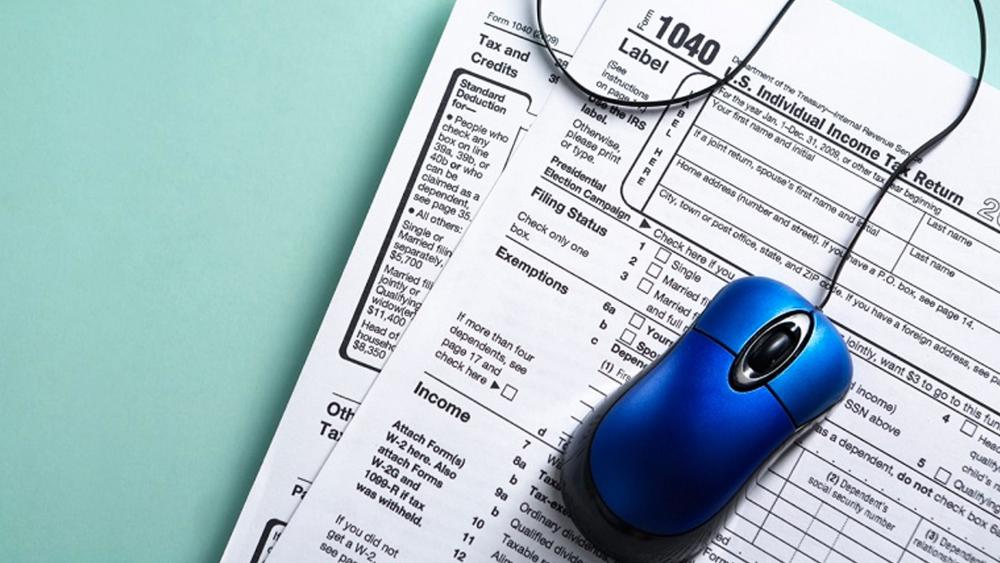The one not-so-pleasant—and even somewhat stinky—part of spring is that your taxes are due. That, of course, could be pleasant if you’re getting a refund. But, not so much if you’re not. Fortunately, there are ways to maximize your return and avoid the most common mistakes people make to ensure the biggest part of your return is your own and not Uncle Sam’s. Failing to maximize your return and making mistakes can mean paying more taxes than you have to or, even worse, under-reporting your income and setting yourself up for interest and penalties later. Here are 11 ways to maximize your tax.
1. Don’t Leave Money on the Table
If you forget to use all of your Flexible Spending Account (FSA) dollars or don’t make contributions to your individual retirement and 529 accounts, you could leave money on the table. Money that should be yours! You have until December 31, to use money in your FSA or contribute to a 529 account. Some states even allow deductions for 529 contributions. You can make contributions to your traditional and Roth IRAs for the 2018 tax year until April 15, 2019.
In 2019, you can contribute even more to your retirement accounts. Contribution limits go up $500 for 2019—$6,000 for anyone under 50 and $7,000 for those over 50—up from $5,500 and $6,500, respectively. If you take advantage of this increase, you can maximize your 2019 return even more.
Another common way to leave money on the table is to not file an income tax return at all. Choosing to not file a return because your income for 2018 doesn’t require it might mean you’re leaving money on the table. Just because your income doesn’t require you to file, doesn’t mean you’re not due a refund. And if you’re eligible for a refund, you have to file a return to get it. In 2018, the IRS reported it had $1.1 billion of unclaimed refunds from an estimated 1 million taxpayers who didn’t file in 2014 alone.
If you left money on the table in a previous tax year, you have three years to file old returns and receive your unclaimed refunds.
2. Claim All Available Deductions, including Charitable Contributions
Dig into all deductions available to you. Some of the more common deductions include charitable donations, medical costs, prepaid interest on a mortgage and education expenses. Deductions are subtracted from your adjusted gross income, which lowers your actual taxable income. Your taxable income is the amount you pay taxes on. The lower it is, the less tax you pay and the higher refund you might get back.
If you’re charitably inclined and itemize your deductions, you can maximize your return by taking advantage of donations in all forms—cash and goods—both can be claimed on your tax return. Be sure to keep good records and receipts. Also, make sure that you’re only claiming deductions for organizations that have tax-exempt status with the IRS.
3. Claim Nonrefundable Credits Too
Tax deductions are refundable credits. They are deductions or credits are subtracted from the amount of tax you owe the IRS. The IRS sees them as payment toward your tax bill. If, when you file your return, deductions add up to more than the amount you’ve already paid in taxes, you’ve overpaid and get money—in the form of a refund—back. Charitable donations, the Child Tax Credit, Earned Income Tax Credit (EITC) and the Health Coverage Tax Credit fall into the refundable credits bucket.
Nonrefundable tax credits also reduce the tax you owe but stop when that amount hits zero. Essentially, they can’t be used to overpay your total bill. And these credits will never net you’re a refund. However, they can still reduce the amount of your tax bill. So, don’t leave them on the table. Examples include the Saver’s Credit, Child Tax Credit, Mortgage Interest Tax Credit and the Child Tax Credit.
Confused? Look at it this way. If you owe $1,000 in taxes and paid it in full via your paychecks and then get a Mortgage Income Tax Credit for any amount, when you file, you won’t owe more taxes. You also won’t get a refund. Even though, essentially, because of the credit, you “paid” more than the full $1,000. The credit is nonrefundable. It’s gone.
Similarly, if you owe, $1,000, paid only $950 via your paychecks and then get a Mortgage Income Tax Credit for $100, when you file, you won’t owe more taxes. You’ve paid in full. You won’t get a $50 refund either.
If you owe, $1,000, paid $1,000 via your paychecks and then get an Earned Income Tax Credit deduction for $100, when you file, you will get a $100 refund, because this credit is refundable. The IRS will see that you overpaid and refund you for the credit.
4. Don’t Be Greedy
It’s easy to get too caught up in minimizing your taxes that you start to make poor decisions. For example, shopping around for the biggest refund might lead you to a tax “professional” that uses incorrect or aggressive accounting—a risk not worth taking.
You can be tempted to be overly aggressive with deductions too. For example, deductions for home offices and unreimbursed business expenses are often abused and misunderstood. A good practice is to save receipts and your company’s reimbursement policy, so you can support your deductions in case of an audit. If you’re claiming a home office, make sure you stay up to date on the current rules and truly qualify for the deduction.
5. Use the Best Filing Status
What’s your best filing status? Knowing what it is a common source of confusion and an overlooked mistake. If you have a tax preparer, make sure you update them on any life changes you’ve had, such as getting married or divorced. Your relationship status on December 31 determines your filing status for the entire year and is the one you need to use when filing that year’s tax return.
The Head of Household filing status causes the most confusion. In general, you must be single and have covered more than 50% of the costs of maintaining a home for yourself and your dependents or other qualified individuals in order to use the Head of Household status. Know that if you’re single and qualify, this filing status gives you into a higher standard deduction than the Single status and may result in a higher return.
Another tip, picking a different filing status might maximize your return. For example, even if you’re married, you calculate your taxes using both the Married Filing Jointly status as well as the Married Filing Separately status. Sometimes Married Filing Separately can reduce each partners’ adjusted gross income and result in a higher refund. Some professional tax services, even offer to do that dual calculation for you.
6. Report All Your Income
This oversight—intentional or not—can be costly. If you have unreported income and the IRS uncovers it, you’re looking at interest and penalties for unpaid taxes. An honest mistake doesn’t give you a pass here, so spend a few extra minutes reviewing your return, thinking through the year and your accounts to make sure you don’t forget any income sources. It’s often 1099 income that’s overlooked—things like contract work. Interest income and dividends from Forms 1099-INT and 1099-DIV are also easy to overlook.
Know that these forms will come directly from the bank or financial institution where you earn the interest. If you’ve elected electronic forms, they won’t come in the mail. You’ll want to log in and ensure they’re not sitting there waiting for your attention. The IRS receives copies of your 1099s and expects to see those sources of income on your return.
It can be helpful to keep a spreadsheet of all of your tax information—sources of income, 1099s, charitable gifts, IRA and 529 contributions, etc. Update it each year to help avoid missing things during tax prep. You’re less likely to forget about a 1099 if it’s listed in your prior year’s tax information. A spreadsheet can also make handing off information to your tax preparer easier year to year.
7. Meet the Deadlines
This tax season, 2018 federal returns are due on April 15, 2019. If you fail to file on time, you’ll owe interest and possibly pay penalty fees on any taxes due but not paid by April 15, 2019. The failure-to-file penalty is a steep 5% of your unpaid tax balance each month your return is late. Worse, if you fail to file and were owed a refund, you’ll pay penalties still.
You can file an extension, but extensions only extend the time you have to file. They don’t extend the time you have to pay! So, if you’re going to owe taxes, you need to ensure you pay them on or before April 15. The failure-to-pay penalty is 0.5% of your unpaid taxes each month.
If you fail to pay and file, you’ll pay both penalties. And not only will failing to pay on time result in added money out of your pocket, a tax lien can hurt your credit score.
Important 2018 Deadlines
Here are important dates for 2018 taxes to keep on your calendar:
- April 15, 2019—Federal tax return due date
- 15, 2019—Last date to file 2018 federal returns if you file for an extension
8. Check Your Math
It sounds a little obvious, but year after year, arithmetic errors and enter the wrong numbers on your tax return are among the most common—and costly—mistakes. When you’re filling out your tax forms, go slowly and double-check your numbers and math. A lot of mathematical errors can be avoided if you’re using tax software that does the calculating for you.
If you’re really bad at math, consider hiring a tax preparation service to do your return. Pros know the ins and outs of tax law. And even though, they’re not free, one may be worth your while if you suck at math. To find a rough average cost for tax preparation, visit Thumbtack and enter your Zip code.
An added advantage of using some professional tax preparers is that if you’re owed a refund, you can get a 0% tax refund advance loan along with your return and get your refund in hand faster if you want.
9. Check Your Spelling
If you spell your name wrong, it slows down the processing of your return. Misspelled or wrong names are most common for newlyweds or people who’ve changed their names in the last year. Make sure the name you use on your return matches the name on your Social Security card.
10. Check Your Bank Account Details
If you plan to use direct deposit to receive your refund, double check the bank account information you provide. If you enter the wrong account information, you won’t receive your refund as you planned. And getting things straightened out can be a pain.
11. Sign Your Return
It’s easy to get so focused on preparing your return and filing it on time that you forget to sign it. The same mistake goes for your tax preparer. If someone else is preparing your taxes, double check that he or she has signed it. And make sure you sign it as well.
If You Have to Refile a Tax Return
If you find you made a mistake after filing your tax return, make the necessary corrections as soon as possible. You need to file an amended return if you made mistakes regarding your filing status, dependents, income, deductions or credits. Form 1040X is used to file the corrected return and it has to be done on paper, rather than digitally. Amended returns must be filed within three years of the original filing date or two years from the point you paid any taxes owed.


